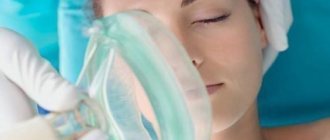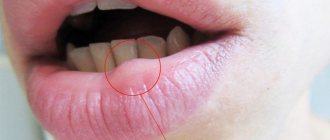In physiognomy, two lines of the cheeks, running from the top of the wings of the nose to the sides of the chin and covering the corners of the mouth, are called FA-LIN in Chinese. These two lines, located in positions 56 and 57, control the fate of a person in the middle years of his fifth decade of life. These years may prove critical. The “critical years” in ancient China meant that if a person had a bad life before this time, it would be much more difficult to turn failure into success in subsequent years. Below we will tell you how to determine a person’s character by their cheeks.
As a general rule, a man should have fairly noticeable cheek lines by age 30. If these lines are already expressed by the age of 20, it is clear that he matures early and is a mature person. If by the age of 30 these lines are still not defined, this is a sign of delayed maturation.
Women rarely have pronounced Fa-Ling by age 30 or even 40. However, once they embark on a competitive professional career, these lines tend to appear.
Gums and teeth
Everyone knows that teeth are the main characters in the process of chewing and grinding food. According to their roles, teeth in a person’s mouth are divided into types:
- Incisors – the front 4 teeth, play the role of biting off the largest pieces.
- Fangs - their role is to break food and separate it into pieces; they are also called “eye teeth”.
- Small and large molars play the role of chewing and grinding food.
People eat food of different origins, both plant and animal. On this basis, it was concluded that people are omnivorous creatures.
This is possible due to the arrangement of the teeth and the structure of the oral cavity, which makes humans fundamentally different from animals.
All teeth have the same structure: a soft core, dentin. The core consists of blood vessels and nerves, and the hard substance (bone) is dentin. The main function of this substance is to protect teeth from microdamage. To do this, it is “painted” with enamel, which feels absolutely nothing. In addition, enamel has no equal in strength in the human body. It consists of an alloy of minerals (phosphorus and calcium salts) saturated with organic substances. The highest concentration of calcium is observed in dentin, where nerve fibers are contained.
Causes of swelling on the cheek
Many people believe that only teeth can provoke swelling of the cheeks. In fact, the reasons may be different.
Dental diseases
Factors related to oral health can provoke the problem. Among them:
- Eruption of impacted wisdom teeth, especially if the patient is over 25 years old. If the growth is abnormal, it is recommended to remove the “eight”.
- Stomatitis affecting the cheek, gums, tongue. The disease is most often diagnosed in children, but it can also occur in adults. An advanced disease provokes swelling. The cheek hurts from the inside, in the corner of the mouth.
- Gum disease, in which pathogenic bacteria accumulate in dental plaque, causing inflammation. Thus, gingivitis is accompanied by bleeding gums, swelling, and bad breath. If the disease is neglected, it will develop into periodontitis, a more serious problem.
Complications in the form of swelling of the cheek can develop after endodontic treatment. If during the procedure the canals are not washed and cleaned well enough, inflammation develops in the pulp chamber. The pathogenic process spreads to the bone, gum and cheek. This is how purulent periostitis develops, which is popularly called “flux”. If the disease is not treated in time, phlegmon and sepsis may develop, which pose a health hazard.
During the recovery period after tooth extraction, swelling of the cheek may also be observed. More often the symptom appears if the intervention was performed on the lower jaw. This problem often arises after implantation. This is the body's reaction to traumatic actions. It goes away in a few days. Otherwise, you need to consult a dentist, who must confirm or rule out the presence of a complication. It can develop due to infection getting into the wound, which threatens the manifestation of peri-implantitis.
Infectious, colds and other diseases
Cheek swelling is one of the symptoms of such diseases:
- Parotitis. When the disease occurs, the salivary glands become inflamed, which explains why soft tissues swell.
- Lymphadenitis. It occurs as an independent disease or as a complication of other ailments, such as diseases of the ENT organs. With lymphadenitis, the cervical, parotid and submandibular lymph nodes become enlarged, and the cheek becomes inflamed.
- Otitis, sinusitis, sinusitis. The inflammatory process can spread to the cheek, under the eye, and the area near the nose.
Pathological processes in gingival tissues often provoke inflammation of the salivary ducts and glands. It can also be an independent disease. It is caused by stones in the ducts, cysts, tumors.
The mucous membrane also swells with inflammation of the trigeminal nerve. In this case, other symptoms appear: numbness, pain radiating to the ear, “lumbago”. Swelling is a common occurrence in diseases of internal organs. Excess fluid due to malfunction of one or another organ accumulates in soft tissues, including the facial area.
Other causative factors
Swelling can also appear as a result of injury. This symptom accompanies soft tissue bruises, joint dislocations, and jaw fractures, which can be caused by a blow or fall. Children are more often susceptible to injury due to their excessive physical activity. Swelling can occur due to an allergic reaction, when the body shows immunity to a certain product. Other reasons:
- severe burn (both thermal and chemical);
- insect bites, which also cause redness and induration;
- poor oral hygiene.
Cheek swelling can occur in pregnant women. The fact is that during this period hormonal changes occur in the body. As a result, the gums swell, which is reflected on the cheek.
Language structure
The human tongue is a soft pink colored muscle mass on which taste buds are located. At the very top of the tongue, and along its edges, there are papillae, which are responsible for the taste of everything that comes into our mouth. It is no secret that the mouth is the first point where the initial processing of food and the adsorption of microorganisms and harmful substances begins. The tongue takes on the most important role here, accumulating on its surface all the harmful substances that form a coating known to everyone. It is imperative, for preventive purposes, to clean your tongue of plaque, which will get rid of the unpleasant odor and possible infections. At the root of the tongue, there are no papillae, there are tonsils. Which play an important role in protecting the human body, standing in the way of microbes, they do not allow them to penetrate inside.
Swelling of the cheek on the inside: what to do
How to remove swelling of the cheek? Depending on the degree of manifestation of the unpleasant symptom and the etiology, different treatment methods are used. Their success depends on the correct diagnosis.
When swelling occurs after dental implantation, ice should be applied to the sore cheek. You need to rinse your mouth lightly. It is important to maintain hygiene, diet and spare the postoperative wound.
Drug treatment
The doctor prescribes medications taking into account the clinical picture and the causes of swelling after a comprehensive diagnosis. You may need:
- "Miramistin" and "Chlorhexidine" - for rinsing;
- "Suprastin" is an antihistamine;
- "Nimesil" is an anti-inflammatory drug;
- “Amoxiclav”, “Lincomycin” are antibiotics that are prescribed for acute purulent periostitis.
How to relieve the pain accompanying the causative disease? Hexoral solution or spray or Lidocaine Asept aerosol can help. The painful syndrome in a child is relieved with the help of products that are used during teething, for example, Dentinox.
In some cases, conservative treatment is not enough, so surgical techniques are used. If there is suppuration, the doctor opens the gum, exposes the cavity with pus and installs drainage to drain the exudate. Surgery is also performed in the presence of a neoplasm.
Sky structure
The part of the oral cavity that is located on top is called the palate. The palate is made up of 2 components, hard and soft. The mucous membrane covers both parts, passing through the hard palate to the soft palate, it gradually turns into gums. The front side of the palate forms rudimentary formations (palatine alveoli), humans do not fully use them, but animals, on the contrary, use them to eat food. The palate has another role besides forming the upper part of the mouth; it is a barrier between the nose and nasopharynx. A kind of barrier wall is a small tongue that blocks access to the nasopharynx during the digestion process.
Symptoms of illness
Depending on the cause, symptoms may vary from case to case. More often with edema, the following symptoms appear:
- swelling on the cheek;
- pain in the causative area;
- difficulties in controlling facial expressions;
- inflammation of the mucous membrane.
It is important to monitor swelling. If it increases, medical attention is required. Reasons to urgently consult a doctor also include increased body temperature, general weakness, purulent discharge from the gums, loss of appetite, numbness and sagging cheeks.
Structure of the mucous membrane
The entire human oral cavity is covered with a mucous membrane, which has a distinctive feature, regenerative ability. The mucous membrane protects the oral cavity from environmental influences. Chemical, mechanical, temperature factors cannot influence it. The structure of the mucous membrane is simple; in the lower part of the mouth - on the cheeks and lips, it forms folds; in the upper part - attached to the bones. The main roles of the mucous membrane:
- The protective role is unpleasant, but it is a fact that many viruses and bacteria accumulate in the human mouth. The mucous membrane retains, prevents reproduction and removes all harmful microorganisms from the oral cavity.
- Sensitive role - Due to the presence on its surface of many receptors responsible for sensations (taste, pain, temperature), it signals all the events that accompany food intake.
- Absorption role – Thanks to this ability, we are able to take medications “under the tongue”. The mucous membrane perfectly absorbs protein and mineral compounds.
Anatomy of the human jaw
The human maxillofacial region has the following anatomical structure:
- mouth slit,
- vestibule of the oral cavity,
- cheeks,
- lips,
- solid sky,
- soft sky,
- language,
- gums,
- teeth,
- upper and lower jaw.
The oral fissure is limited by the lips, which represent the orbicularis oris muscle and subcutaneous fat.
The cheeks are formed by adipose tissue (Bishat's lump) and bundles of buccal muscle. In the projection of the crown of the upper second molar on the inside of the cheeks there is a papillary elevation of the mucous membrane.
The excretory duct of the parotid salivary gland opens from the papillary eminence.
The oral cavity, cheeks, upper and lower gums and teeth form the vestibule of the oral cavity.
Gums are alveolar processes of the upper and lower jaws, covered with mucous membrane, which cover the teeth in the cervical area.
The mucous membrane of the mouth and the enamel of the teeth are constantly moistened with saliva, which is secreted by paired parotid, sublingual and submandibular glands, as well as many small glands, in a volume of up to 1.5 liters per day. Saliva contains organic and inorganic substances, it contains about 18 amino acids, 50 enzymes, mucin, substances with antibacterial activity (leukins, opsonins, lysozyme).
Saliva promotes the maturation of enamel, remineralization, has a cleansing effect, antibacterial activity and at the same time favors the formation of plaque and tartar.
The hard palate is formed by the palatine processes of the upper jaws and the perpendicular processes of the palatine bones.
The soft palate is formed by muscle fibers covered with a mucous membrane with a large number of mucous glands. On the sides of it there are arches - the palatine lingual and the velopharyngeal, between which there are accumulations of lymphoid tissue, the so-called palatine tonsil.
The tongue is a muscular organ covered with a mucous membrane. Its structure is divided into a wide rear part - root, body, middle part and apex. On the upper mucous membrane of the tongue, there are four types of papillae containing taste buds: filiform, leaf-shaped, mushroom-shaped, and rough.
Upper jaw
The upper jaw is a paired fixed bone. Its structure includes the body, palatine process, frontal process, zygomatic process, and alveolar process.
The palatine process takes part in the formation of the hard palate, the frontal process participates in the formation of the orbit, the alveolar process carries the sockets of the teeth - alveoli, and the zygomatic process attaches the zygomatic bone.
In the body of the upper jaw there is a cavity - the maxillary sinus, containing air and lined from the inside with mucous membrane. In close proximity to it are the apexes of the roots of the large molars (especially the sixth). Therefore, there is a high probability that the inflammatory process that has arisen in the tooth and periodontal tissues can easily spread to the sinus - sinusitis will develop.
Lower jaw
The lower jaw is an unpaired movable bone, shaped like a horseshoe. Its structure includes: a body with dental alveoli; two branches ending in condylar and coronoid processes; the condylar process, which connects with the articular fossa of the temporal bone, participates in the formation of the temporomandibular joint, due to which movement in the lower jaw is carried out.
According to data from dental reference books
A full range of dental services in Istra for adults and children: from consultation to complex operations within one clinic “Doctor Nebolit”
Consultation and appointments daily from 9:00 to 19:00
- +7 (49831) 4-42-12
- Contacts
What not to do if your cheek is swollen
Before removing the swelling, so as not to worsen the situation, you need to understand what can be done and what cannot be done. If you are not sure of the cause of the swelling, you do not need to apply any compresses, neither warm nor cold, before visiting the doctor. Such actions are fraught with negative consequences. For example, when pus forms, a hot compress can accelerate the development of the pathological process. It is not even recommended to sleep on the sore side. You should also not disturb the swollen cheek, press or massage it.
You should not take painkillers immediately before your visit to the doctor. It can obscure the clinical picture and complicate the diagnosis. It is also prohibited to use any medications without a doctor’s prescription and supervision, especially antibiotics, which affect not only the cause of the disease, but also the entire body.










